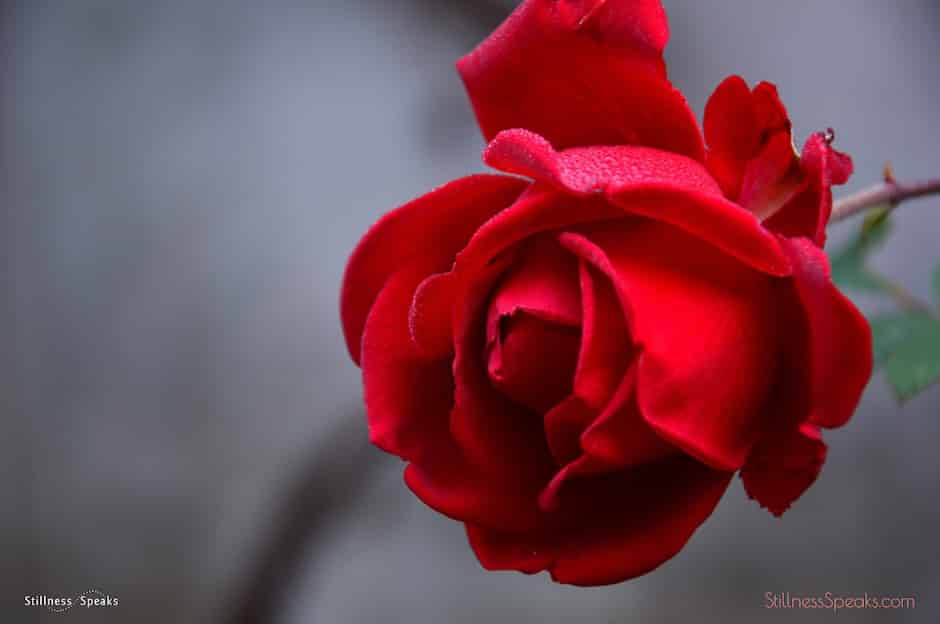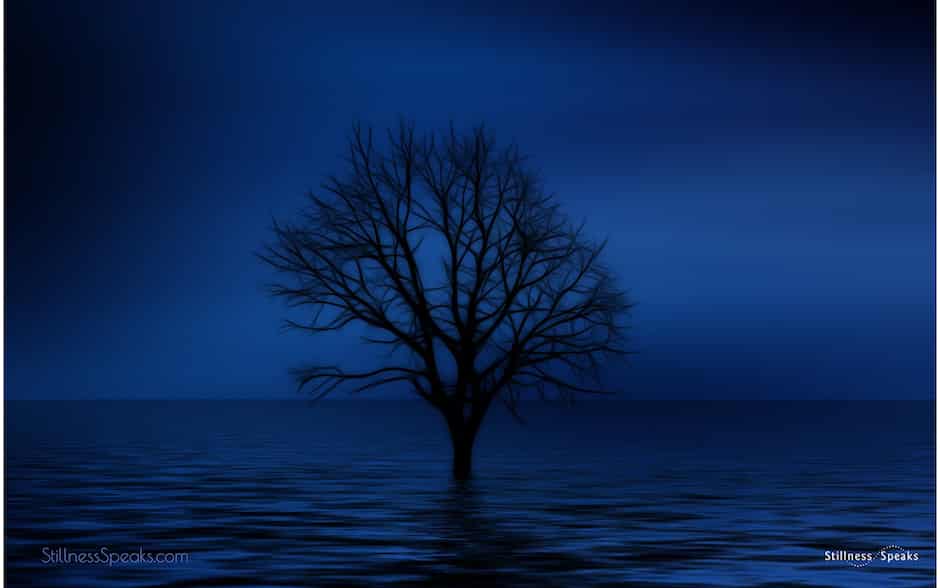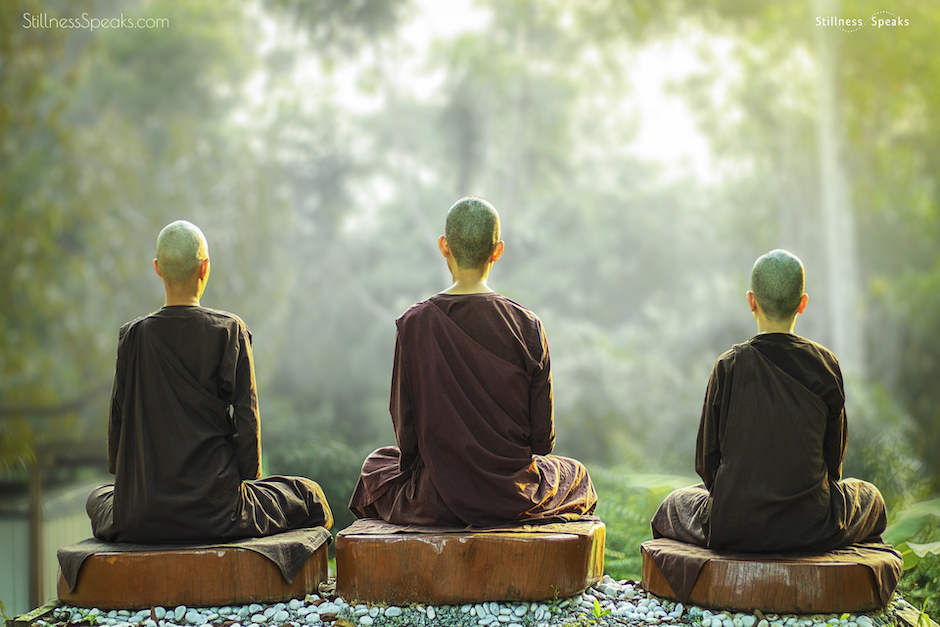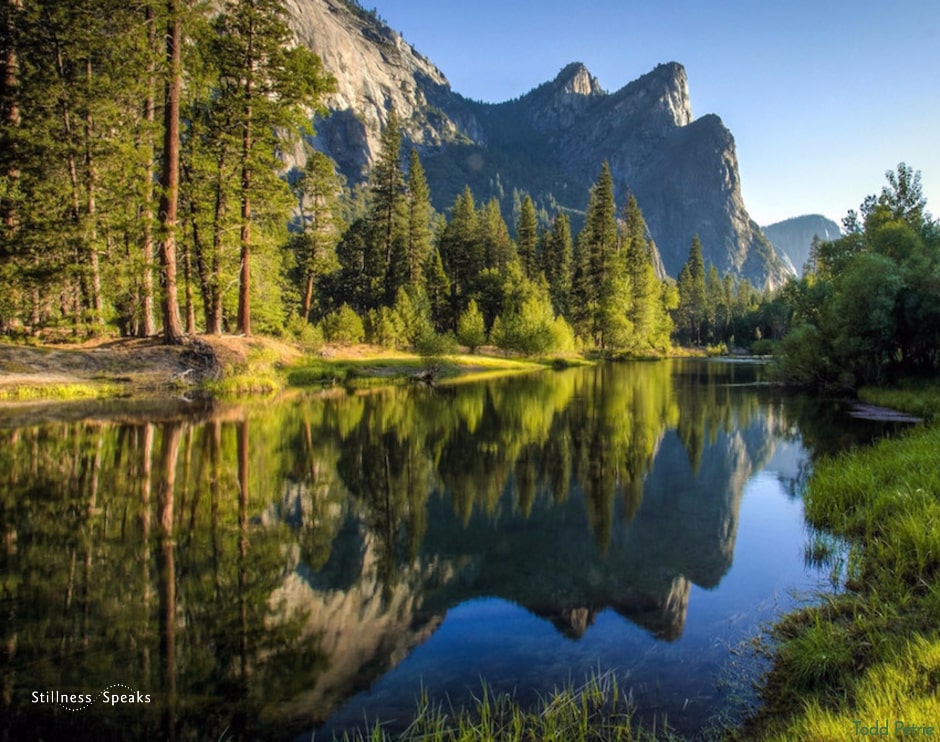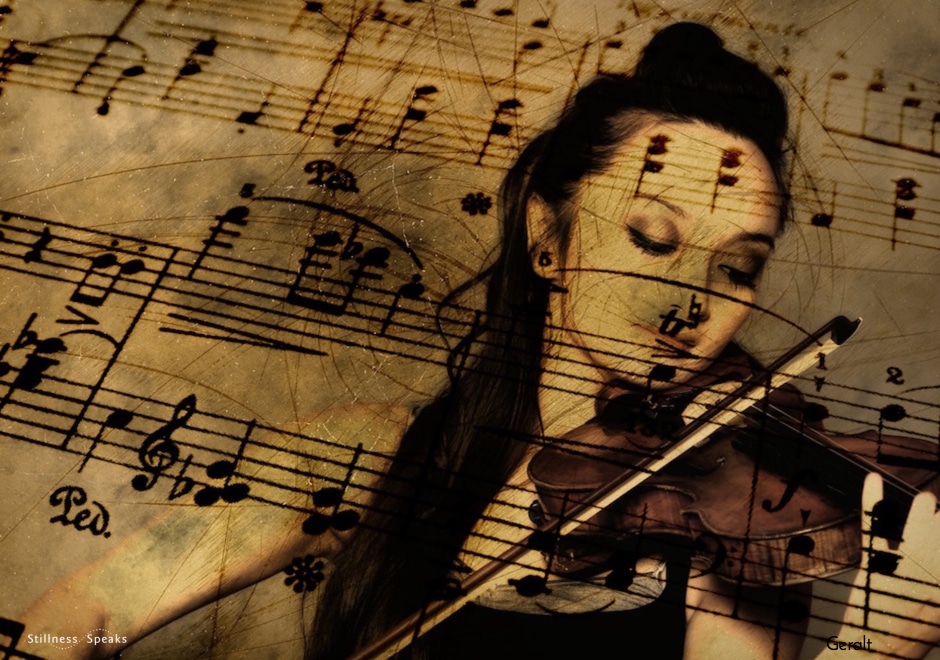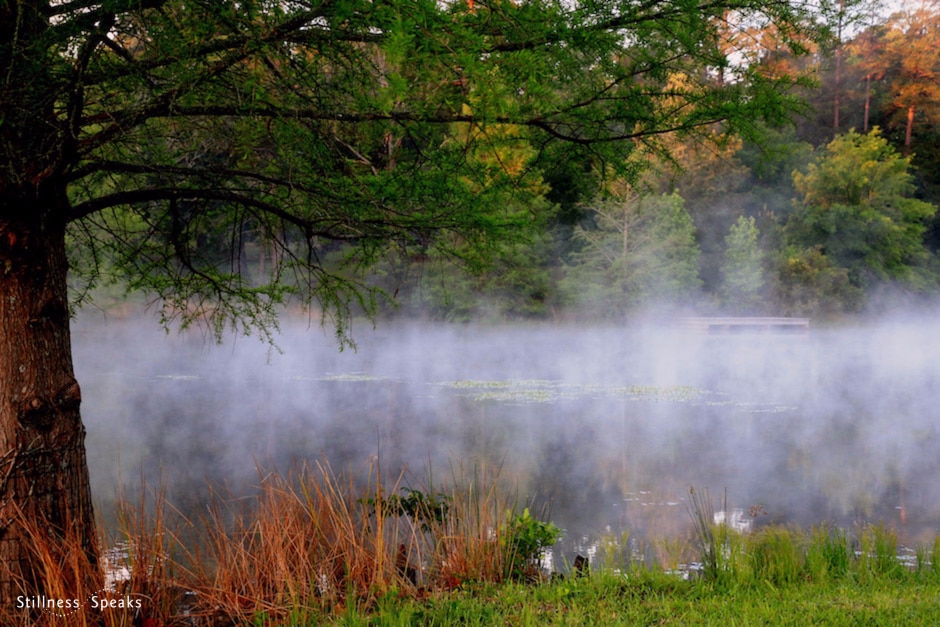…as we learn to stop and see in a habitual and sustained way, our eyes are opened to the countless treasures that lie right here within our reach, which can fill our hearts with untold joy and deep peace. ~ Ruben Habito
How often do we feel truly satisfied with ourselves and our lives? How long do these feelings of fulfillment last? Notice how quickly a gnawing sense dis-ease displaces moments of peace and fulfillment with a restless desire for stimulation, novelty, or change.
This cycle of longing and desire recently took me for a ride shortly after I purchased a small new home. To get me started, my mother gave me some money to use to furnish the space. Excitedly I bought a couch, rug, bed, table and chairs, desk and some dishes. Once the funds were spent and the items in place, I looked around at my newly furnished home and felt satisfied, enriched and immensely fulfilled. This happy fulness lasted… about one week.
I began looking at the empty walls and vacant corners of my new house, my mind churning with thoughts about buying more. Most evenings I spent hours browsing the internet for artwork and other items to further fill my small home. I’d get a brief burst of excitement with each purchase, but felt less and less satisfied with each new item. I was trying to fill an empty space within myself with each new object.
In retrospect, I realize that my persistent desire for more is the normal human affliction, a cycle of ongoing longing and desire. This cycle is the wheel of suffering which Ruben Habito, Sanbo Zen teacher at the Maria Kannon Zen Center in Dallas Texas, describes as dukkha, the source suffering.
Chronic dissatisfaction seems to emerge from a core place within, from the deepest sense of self, my “I”… am “I “primarily a mechanism of continual longing? What is this longing and what is this “I” that I take myself to be? Am I nothing more than a blind consciousness grasping hungrily at the myriad of distractions offered by the ever turning wheel of life and death, pleasure and pain, emptiness and fulness?
Discover You Hidden Treasure, written by Ruben Habito, explores suffering and provides a path toward finding your hidden treasure, a treasure unlike anything the world longing and desire offers. Habito recommends that we begin by stopping and seeing our habitual patterns. Using meditation and contemplative practices, Habito shows us a radically alternative way to live.
The above summary, and this post, is written by Johanna Sindelar, a member of our Content Publishing team. The “I/me” story is her personal experience.
One of my favorite Zen kōans is about a monk named Qingshui (pronounced Seizei in Japanese), who asks his teacher, Caoshan, “Master, I am alone and poor. Help me to become prosperous.” Caoshan responds, addressing him: “Venerable Qing!” To this Qingshui replies, saying “Yes, Master.” Thereby Caoshan proclaims, “There! You have just drunk three of the finest cups of wine in all of China, and you say you have not yet moistened your lips?”
A casual reader is tempted to ask, now what in the world is the Zen Master talking about here? What cups of wine? Where can they be found? And that is precisely the kind of question that this kōan is meant to provoke. The Master is telling Qingshui, and also each and everyone of us, “You say you are alone and poor. Don’t you realize that you possess treasures in abundance, right there before your very eyes? Stop for a moment, open your eyes and see!”
There is another story of a seasoned Zen monk who was commissioned by the abbot of a temple to transport a small golden statue of the Buddha, gilded with jewels, to another temple where it was to be placed on a newly constructed altar. On the way to that other temple this monk happened to be ambushed by robbers. They beat him up badly, and took not only the golden Buddha with the jewels, but also the bullock cart on which he was riding, and his clothes and everything else he had with him, leaving him lying unconscious on a ditch by the side of the road. When this monk regained consciousness, body aching all over, it was night, and the moon was shining in resplendent light against the background of a starlit night. Looking up at the sky, the monk exclaimed, “Oh, those poor robbers. I wish I could have given them this beautiful moon as well!”
What an unusual way to respond in the midst of such tragic circumstances, one might say. This monk’s remark reveals the mind and heart of one who has found one’s true treasure, one that cannot ever be taken away by robbers or by anyone else. This is a lifelong treasure that never diminishes, but on the contrary, only increases in quality and depth through the years. In the Gospel of Matthew Jesus calls our attention to this kind of treasure “where neither moth nor rust consumes and where thieves do not break in and steal.” (Mt. 6:19-20) One who comes upon this kind of treasure earnestly wants only to share it with each and everyone around.
The verse appended to the kōan on Qingshui by Wumen describes the heart and mind of those who have made this treasure their very own:
Poor as the poorest,
They are as brave as the bravest.
They can hardly sustain themselves,
Yet they dare to compete with one another for wealth.
This is intriguing indeed, and we are led to ask, “What kind of treasure is this all about?” And more importantly, “How may I gain access to this treasure?” Qingshui is us, feeling all alone and poor, and earnestly wanting to be “prosperous.”
As we go through this earthly life of ours, whether we may actually be materially impoverished, or be somewhere in the middle class, or even be on the affluent side, we feel “alone and poor.” Even those few among us who may have abundant resources and live in palatial mansions, have huge bank accounts, and have scores of people at our beck and call, cannot evade that feeling of being “alone and poor,” knowing that money can only go so far, and we realize that it cannot buy what we truly long for deep in our hearts. What is it then that we truly yearn for in this life, our true heart’s desire, that one thing necessary that Jesus alludes to (Luke 10:42)?
Reflecting on the way we live our lives, we may notice that…
…instead of devoting ourselves to seeking that one thing necessary that can fill our hearts with true peace and joy, we spend our time and energy in the pursuit of many things we are led to think are “necessary” for us.
The consumption-driven economy of our contemporary global society feeds, and conversely feeds on people’s desire to have, and to have more and more at that. An underlying assumption that propels this consumeristic culture is that “you are what you have.” Your value as a person is thought to depend on the kinds of things that you possess. It is only natural therefore to want those things that everybody else seems to want, like a big house, a flashy car, fashionable clothes, the right kind of designer handbag or shoes, and so on. Having these things may seem to give us the feeling that we are “somebody” that can match up with anybody else out there. So we continue trying our best to keep up with the trends, to be able to buy the latest in those “must-have” items blown out of proportion in the media or that we hear friends and co-workers talk about.
Swayed by this attitude, we notice that the more we have, we want still more. And then at some point we may come to realize that we can never be truly satisfied with what we already have, because there is always something else out there that we don’t have yet. This feeling of acquiring some things and perhaps obtaining some momentary satisfaction in getting hold of them, and then after a short while wanting something else, and in all this remaining deeply unsatisfied, is an aspect of what the Buddha identified as the First Ennobling Truth: dukkha.
This term is a Sanskrit/Pāli compound referring to a wheel that is not rightly set on its hub, and is thereby not rolling properly as it should. The term dukkha then describes the human condition that is dys-functional and out of sync, a condition of dis-ease and dissatisfaction. Incidentally, its reverse is the term sukha(a wheel that is centered on its hub and revolving smoothly), which is translated as “ease” or “contentment” or “happiness.” This term appears in the Metta Sutta (Treatise on Lovingkindness), in a phrase that Buddhists throughout the world often recite: “May all beings be at ease.” “May all beings be happy.” The question then is, how can we turn our lives around, from a state of dukkha, to one of sukha?
The Buddha, in the second of the Four Ennobling Truths, invites us to examine the root cause of our dissatisfactory state of being. It can be summarized in one word: craving. In short, it is this very desire to have, and to have more, and still more, that seems to be causing our dis-ease and messing up our lives. David Loy writes how our feeling of being driven to want more and more comes from a deeply felt sense of lack, and points out that this is a characteristic of our human mode of being in this finite world. What we think, say and do, tend to be motivated by this need to fill in this inner lack that gnaws at us at the very heart of our mortal being. And yet, the more we seek to fill this lack by acting on our craving to have more and more, the less we are truly satisfied, and instead are plunged more deeply in a vicious cycle of unfulfillment and dissatisfaction.
Underlying this lack is the delusory idea of “I, me, mine, ” that we presume to exist and which we identify with our person, which we perceive as distinct and separate from other “I’s” and from the rest of the world, which thereby feels alienated, isolated, “alone and poor.” This isolated and impoverished “I” needs to prop up its insecure foundations, and seeks to overcome this feeling of alienation and impoverishment. It does so by grasping at all kinds of things, material as well as non-material, driven to possess and thereby identify with things that it can call its very own, and thus bolstering itself against those feelings of insecurity and poverty that threaten it from all sides.
How do we uproot this sense of lack, connected with the delusory idea of “I, me, mine” that continually drives us more deeply in the cycle of dissatisfaction? What practical steps can we take in this regard? The Buddha’s prescription here is straightforward and clear. He advises us: stop and see. That is…
…to stop the machinations of our discursive mind, and see through this delusory “I, me, mine,” and to see “things as they really are.”
These two words, stop and see, encapsulate the entire scope and extent of Buddhist meditation. There are different schools of meditation that developed and blossomed in the Buddhist family of traditions through the centuries, but underlying the differences in emphases and technical aspects of meditative practice presented by the various schools is this common strand summarized in these two words.
What happens when a person takes this invitation of the Buddha to take up the formal practice of meditation, that is, to stop and see, and do so in a sustained way? There are numerous books that anyone can pick up and read in this regard, and these can provide valuable guidelines. But reading books about meditation is like looking at a menu and getting one’s mouth moistened in imagining the delicious dishes described. Here let me just offer a couple of appetizers, and then conclude with a practical suggestion.
Alan Clements, a meditation teacher who lived in Burma as a monk for a number of years and is now based in California, offers us this description of what can happen to one who takes up the practice of meditation.
The practice of meditation became a wonderful new way of life. I was amazed to see how awareness put eyes and ears where there had been none. It enhanced perception and revealed greater nuance and dimension. Sounds were accentuated. Colors became brighter. Tastes, more subtle and sweeter. Smells more fragrant. At times it felt like every cell in my body was undulating with orgasmic bliss. Watching the fog lift in the early morning was a dance in itself—the play of photons, like tiny prisms refracting thousands of infinitesimal rainbows on the eye. The smell of the gardenia bush just outside my window became a symphony of textured scents. I fell in love with the simplicity of just being.
In short as we learn to stop and see in a habitual and sustained way, our eyes are opened to the countless treasures that lie right here within our reach, which can fill our hearts with untold joy and deep peace. Meditation enables us see through the prison of that delusive “I, me, mine” which makes us grasp for things that only leave us unfulfilled and frustrated. It opens us to an infinitely refreshing and exciting horizon which we had hardly noticed, but which had been and is there all the time.
In the kōan above, the monk Qingshui implores Master Caoshan earnestly, “Master, I am alone and poor. Please help me become prosperous.” The Master replies, addressing him, “Venerable Qing!” The monk responds, “Yes, Master.” Notice the Zen Master’s skillful way of guiding, pointing directly to the student’s heart and mind, as if ringing a bell to awaken him. “Venerable Qing!” The sound pierces Qingshui’s heart, and resonates throughout the universe. Qingshui, fully at attention, sheds all thought of “I, me, mine,” and hears. From the depths, with no place for the “I, me, mine” to intrude, he responds, loud and clear: “Yes, Master.”
It is a sound that reverberates through all time and space. Just that. Qingshui and Caoshan, each in their own way, are fully at attention, listening with one’s entire being, and responding in that same fullness, and one might note, emptiness (that is, from a state totally devoid of the thought of “I, me, mine”). And in doing so, they are bringing to full light the hidden treasures of the universe, right then and there. That is what Master Caoshan is referring to when he says, “There! You have just drunk three of the finest cups of wine in all of China, and you say you have not yet moistened your lips?”
Master Caoshan addresses us by name too, as do all the Zen ancestors and masters of old and of late, inviting us to a turnabout in the way we live our lives. A consumerist-oriented, “acquisitive” mode of being, centered on the “I, me, mine,” keeps us imprisoned in a world of dissatisfaction, in a state of feeling “alone and poor.”
We are invited to step out of that kind of life, and instead to enter a mode of being wherein we are able to stop and see, and behold the treasures that are right there in the midst of those “ordinary” things in our day to day life.
This is called the contemplative path, a way of life and mode of being that allows us to discover, behold, partake of, and enjoy the treasures teeming all around us, and share them with one another, in wonder, gratitude, and joy. We may embark on this way of life by taking the very practical step of seeking out and joining a community of practitioners, and finding a teacher who can walk with us and guide us along this path. It promises to be a path of surprise and discovery, of treasure upon treasure to our heart’s content, enough for a lifetime and beyond.
Discover Your Hidden Treasure was written by Ruben Habito and originally published on the Maria Kannon Zen Center’s website. It was taken from the Mountain Cloud Zen Center website.
Images (edited and logos added): Featured and 1) Red Rose by Peggychoucair 2) Sunset moon by jplenio 3) Child by Bess-Hamati 4) Loneliness by Geralt 5) Theravada Nuns by Truthseeker08. All images are CC0 1.0 Universal, Public Domain from Pixabay.com
